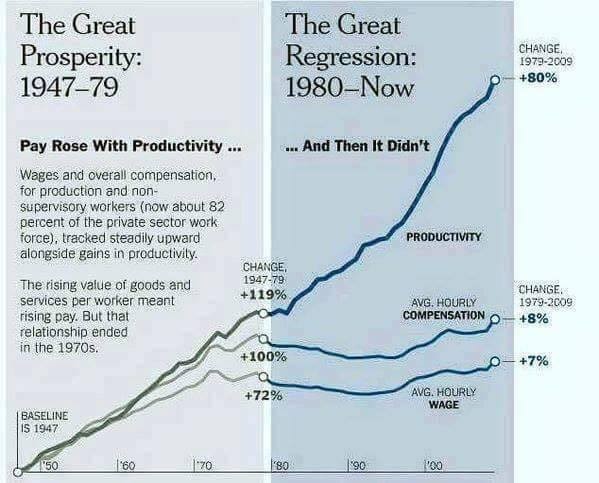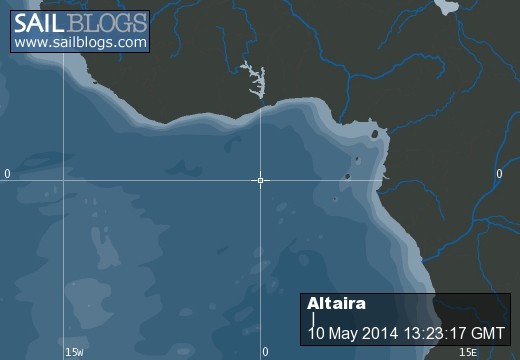Profile

Who: Kimball Corson. Text and Photos not disclaimed or that are obviously not mine are copyright (c) Kimball Corson 2004-2016
Port: Lake Pleasant, AZ
Altaira Wandering the Oceans
Favorites
- 7 Seas Cruising Association
- American Sailing Association
- Buoyweather Service
- CDC Traveler's Heath Advisories
- Cruiser Log venue
- Cruisers Forum
- Cruising Club of America
- Cruising Resources
- Cruising World Magazine
- Earthrace World Record
- Economic and Financial Indicators
- Economist Magazine
- Equipmment and Boat Reviews
- Float Plan Form
- Greenpeace Int'l
- Grib File Access
- Heavy Weather Sailing
- IMS Certificates
- Inland Travel: Expedia
- Intrade Prediction Markets
- Latitude 38
- London Financial Times
- Marine Books and Charts
- Marine Radios
- Nature Conservancy for Oceans
- New York Times
- NOAA Hurricane Analysis
- NOAA Weather Forecasts
- Noonsite, World Cruisng Info
- Ocean Cruising Club
- Overseas Mail Forwarding Services
- Practical Sailor Magazine
- RGE Economic Monitor
- Sail Gear Source I
- Sail Gear Source II
- Sail Gear Source III
- Sail Gear Source IV
- Sailboat Selection for Offshore Use
- Sailboats for Sale
- Sailing Items Sources Links
- SailMail (Marine Radio)
- Sailnet Sailing Information
- Seeking Alpha
- Tide & Current Program
- Tide Prediction Programs
- Tides & Currents
- TruthDig in the News
- U.S. Sailing Association
- Univ of Chicago Law Faculty Blog
- US State Dept Travel Advisories
- Voyage Planning (with pilot charts)
- Wall Street Journal
- Washington Post
- Weather.com
- Weather: MagicSeaweed
- Weather: Wetsand
- WinLink (Ham Radio)
- World Clock + Time Zones
09 April 2018 | Pago Pago, American Samoa
10 March 2018 | Pago Pago, American Samoa
10 March 2018 | Pago Pago, American Samoa
10 March 2018 | Pago Pago, American Samoa
22 August 2017 | Pago Pago, American Samoa
22 August 2017 | Pago Pago, American Samoa
22 August 2017 | Pago Pago, American Samoa
22 August 2017 | Pago Pago, American Samoa
22 August 2017 | Pago Pago, American Samoa
22 August 2017 | Pago Pago, American Samoa
22 August 2017 | Pago Pago, American Samoa
22 August 2017 | Pago Pago, American Samoa
22 August 2017 | Pago Pago, American Samoa
22 August 2017 | Pago Pago, American Samoa
22 August 2017 | Pago Pago, American Samoa
22 August 2017 | Pago Pago, American Samoa
22 August 2017 | Pago Pago, American Samoa
22 August 2017 | Pago Pago, American Samoa
22 August 2017 | Pago Pago, American Samoa
09 August 2017 | Pago Pago, American Samoa
The Great Theft of Labor’s Wages by Corporate America: The Great Three Stage Heist
16 January 2017 | Pago Pago, American Samoa
Kimball Corson

Time was, under the perfectly competitive model of competition, input factors were paid the value of their marginal product. That went for labor too, notwithstanding the pushing and pulling of corporations and labor unions, all as reflected in the graph below before say about 1973. Then something happened.
But before getting to that, we need to discuss the marginal productivity pricing of factor inputs, including labor. As capital – the machinery and stuff that labor works with -- increased relative to the number of laborers, their marginal productivity increased, and the value of that productivity increased. So did their wages. To the contrary, had there been less capital and more laborers, the value of their marginal productivity and wages would have been less. Until about 1973, marginal productivity pricing for labor pretty much applied in the US, as the graph shows, but after that as unions faded and corporate power grew, something happened.
Corporations began to think, why should we have to pay for all this extra capital when the benefits mostly go to wage earners in the form of higher wages, overlooking the fact that there were fewer laborers now required to produce the same output, where only so much can be sold at a given price. Inasmuch as top corporate management controlled corporate cash flow and decided who got what, CEOs did two things. They started slowly paying themselves higher salaries and bonuses. They allocated more wage increases to profits. Other top management, coming to understand what was going on, in the small, got on board, too, as did upper middle management, in time. But this money for higher profits and salaries had to come from somewhere and it came out of the higher productivity that should have been paid as higher wages. Most stolen future wages was diverted to capital and top management, however.
But corporations were clever about it. They watched what each other did and all sort of reached the obvious conclusion that cutting wages would create uproar so the better course was to be patient, keep adding capital to the production process, but hold wages constant and take management’s and capital's ever bigger cut out of labor’s rising productivity and wages going forward. CEO salaries slid up from good to very good and on to now outrageous, all over time. So did profits as well. Matters became increasingly unreasonable slowly and over time, in increments, as labor productivity grew. Management found further justification for its actions in the real and rising unemployment of the surplus labor it observed and the cost of new capital. But this was only the second stage of capital’s great theft of labor’s wages.
This brings us to the third stage in top management’s thinking. All of what I describe was the precursor sensibility to the third stage of the theft of wages. It turns on the idea of why not get rid of labor entirely and replace them with robots so as to keep all their wages and have capital keep all of the productivity gains – the direction in which we are largely headed. What we observe since the early 1970’s is labor’s share of national income has been falling and capital’s share of national income has been rising in virtual like amount. No surprise, but nobody dares talk about it from capital's side; only labor's.
The greatest heist or theft in modern times and virtually no one outside of top management types even knows about it or understand it.
The consequences of diminished aggregate demand and growing income equality are the symptoms, but not the cause. The reason corporate America has gone after appropriating wages is because there is not adequate growth for rising profits due to deficient aggregate demand due to excessive income inequality.
The game started with the first stage, most know about, which was the theft of labor’s wages by ditching much American labor and sending their jobs overseas for cheaper foreign labor so capital or the corporations owning it and the production process could pocket for themselves the resulting saving in wages.
That was the first bite. The second was to steal US labor’s increased productivity and wage increases over time as I describe, and the third is to displace labor totally and take all their remaining wages in multiple waves of new robotics. This stage is just seriously getting underway.
It is a long story of greed, small and narrow mindedness, capitalism, as predation and of our government and politicians being totally “out to lunch” like almost all of the public. The big or macro picture escapes almost everyone.
But before getting to that, we need to discuss the marginal productivity pricing of factor inputs, including labor. As capital – the machinery and stuff that labor works with -- increased relative to the number of laborers, their marginal productivity increased, and the value of that productivity increased. So did their wages. To the contrary, had there been less capital and more laborers, the value of their marginal productivity and wages would have been less. Until about 1973, marginal productivity pricing for labor pretty much applied in the US, as the graph shows, but after that as unions faded and corporate power grew, something happened.
Corporations began to think, why should we have to pay for all this extra capital when the benefits mostly go to wage earners in the form of higher wages, overlooking the fact that there were fewer laborers now required to produce the same output, where only so much can be sold at a given price. Inasmuch as top corporate management controlled corporate cash flow and decided who got what, CEOs did two things. They started slowly paying themselves higher salaries and bonuses. They allocated more wage increases to profits. Other top management, coming to understand what was going on, in the small, got on board, too, as did upper middle management, in time. But this money for higher profits and salaries had to come from somewhere and it came out of the higher productivity that should have been paid as higher wages. Most stolen future wages was diverted to capital and top management, however.
But corporations were clever about it. They watched what each other did and all sort of reached the obvious conclusion that cutting wages would create uproar so the better course was to be patient, keep adding capital to the production process, but hold wages constant and take management’s and capital's ever bigger cut out of labor’s rising productivity and wages going forward. CEO salaries slid up from good to very good and on to now outrageous, all over time. So did profits as well. Matters became increasingly unreasonable slowly and over time, in increments, as labor productivity grew. Management found further justification for its actions in the real and rising unemployment of the surplus labor it observed and the cost of new capital. But this was only the second stage of capital’s great theft of labor’s wages.
This brings us to the third stage in top management’s thinking. All of what I describe was the precursor sensibility to the third stage of the theft of wages. It turns on the idea of why not get rid of labor entirely and replace them with robots so as to keep all their wages and have capital keep all of the productivity gains – the direction in which we are largely headed. What we observe since the early 1970’s is labor’s share of national income has been falling and capital’s share of national income has been rising in virtual like amount. No surprise, but nobody dares talk about it from capital's side; only labor's.
The greatest heist or theft in modern times and virtually no one outside of top management types even knows about it or understand it.
The consequences of diminished aggregate demand and growing income equality are the symptoms, but not the cause. The reason corporate America has gone after appropriating wages is because there is not adequate growth for rising profits due to deficient aggregate demand due to excessive income inequality.
The game started with the first stage, most know about, which was the theft of labor’s wages by ditching much American labor and sending their jobs overseas for cheaper foreign labor so capital or the corporations owning it and the production process could pocket for themselves the resulting saving in wages.
That was the first bite. The second was to steal US labor’s increased productivity and wage increases over time as I describe, and the third is to displace labor totally and take all their remaining wages in multiple waves of new robotics. This stage is just seriously getting underway.
It is a long story of greed, small and narrow mindedness, capitalism, as predation and of our government and politicians being totally “out to lunch” like almost all of the public. The big or macro picture escapes almost everyone.
Comments
| Vessel Name: | Altaira |
| Vessel Make/Model: | A Fair Weather Mariner 39 is a fast (PHRF 132), heavily ballasted (43%), high-aspect (6:1), stiff, comfortable, offshore performance cruiser by Bob Perry that goes to wind well (30 deg w/ good headway) and is also good up and down the Beaufort scale. |
| Hailing Port: | Lake Pleasant, AZ |
| Crew: | Kimball Corson. Text and Photos not disclaimed or that are obviously not mine are copyright (c) Kimball Corson 2004-2016 |
| About: | |
| Extra: |
Altaira's Photos - Main
No items in this gallery.
Profile

Who: Kimball Corson. Text and Photos not disclaimed or that are obviously not mine are copyright (c) Kimball Corson 2004-2016
Port: Lake Pleasant, AZ
Altaira Wandering the Oceans
Favorites
- 7 Seas Cruising Association
- American Sailing Association
- Buoyweather Service
- CDC Traveler's Heath Advisories
- Cruiser Log venue
- Cruisers Forum
- Cruising Club of America
- Cruising Resources
- Cruising World Magazine
- Earthrace World Record
- Economic and Financial Indicators
- Economist Magazine
- Equipmment and Boat Reviews
- Float Plan Form
- Greenpeace Int'l
- Grib File Access
- Heavy Weather Sailing
- IMS Certificates
- Inland Travel: Expedia
- Intrade Prediction Markets
- Latitude 38
- London Financial Times
- Marine Books and Charts
- Marine Radios
- Nature Conservancy for Oceans
- New York Times
- NOAA Hurricane Analysis
- NOAA Weather Forecasts
- Noonsite, World Cruisng Info
- Ocean Cruising Club
- Overseas Mail Forwarding Services
- Practical Sailor Magazine
- RGE Economic Monitor
- Sail Gear Source I
- Sail Gear Source II
- Sail Gear Source III
- Sail Gear Source IV
- Sailboat Selection for Offshore Use
- Sailboats for Sale
- Sailing Items Sources Links
- SailMail (Marine Radio)
- Sailnet Sailing Information
- Seeking Alpha
- Tide & Current Program
- Tide Prediction Programs
- Tides & Currents
- TruthDig in the News
- U.S. Sailing Association
- Univ of Chicago Law Faculty Blog
- US State Dept Travel Advisories
- Voyage Planning (with pilot charts)
- Wall Street Journal
- Washington Post
- Weather.com
- Weather: MagicSeaweed
- Weather: Wetsand
- WinLink (Ham Radio)
- World Clock + Time Zones
